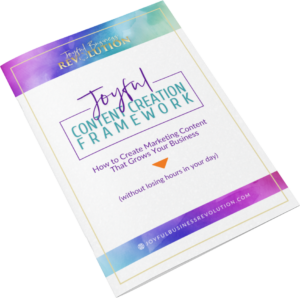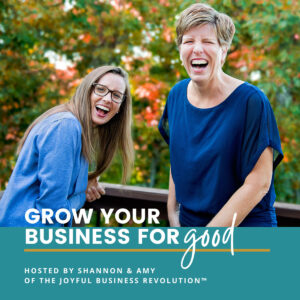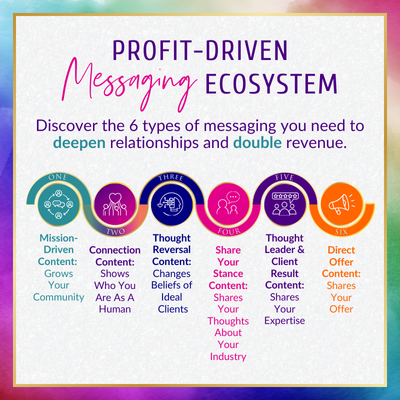What you do matters—so does your audience and what they get out of the deal. And in a nutshell, that’s what your unique value proposition (UVP) and unique selling proposition (USP) are all about. They show your customers what you do, why they should care, and why you’re the best person for the job.
But I’ll share something I wish every coach or consultant knew—taking action is more important than spending months perfecting these statements.
Over the last 10 years in business helping people fine-tune their messaging, I can count on one hand the number of times UVP and USP have been at the heart of any project or client relationship.
For most people I typically work with—coaches, consultants, and experts—the most important thing is knowing what you do, what you bring to the table, and why it matters. Whether you call it UVP, USP, Unique Mechanism, Wow Factor, or something else, while there are nuances, it all boils down to why you.
The rest is just wordsmithing. Unless you’re working on high-level corporate messaging where you have to have it all lined out, it’s not worth the countless hours of time deciding whether you serve clients or customers.
Since I feel so strongly that defining your UVP or USP is holding you back, why am I including an article on UVP vs. USP in my messaging strategy series? You need to understand how to get unstuck so you can move forward and take action.
Getting a few statements perfect isn’t going to win you sales.
Taking action will.
To be clear, by action, I mean marketing your business, creating content, and growing (and nurturing) your audience. While defining your USP or UVP can help you clarify your messaging, people buy from people they trust, so sales come from strengthening your relationships.
Content creation makes some people want to run the other direction, so Amy and I created the Content Personality® Club to help business owners like you find joy in email marketing content creation (and provide the accountability to help you get it done). Get the details here.
What is a Unique Value Proposition (UVP)?
So before I help you get unstuck, let’s define what a UVP is. A unique value proposition is a single statement where you define your customers, how you’re solving their problems, and the value it brings—it can be tied to emotions or money.
Yours could be: We help __________ (audience) _____________ (solve problem) so they ________________(value to the client).
Here’s an example of our UVP:
Joyful Business Revolution helps coaches, consultants, and experts deepen relationships and double their revenue with one email a week.
Here’s a second version we could use:
Joyful Business Revolution helps coaches, consultants, and experts deepen relationships and sell double the high-ticket offers with one email a week.
While both versions speak to the simplicity and sustainability we offer, the first speaks to the emotional benefit or vision, while the second speaks to the financial outcome. In theory, we could combine them or use them in campaigns for slightly different audiences.
You could also create a value prop focusing on price, quality, convenience, security, and a boatload of other aspects based on your audience’s values.
And that’s where a lot of people overthink. Instead, I recommend filling in the blanks and moving on. The rest of your messaging and marketing can finetune what matters most to your audience—and you can always come back and revisit this.
Wondering how to define your value prop and use it to grow your business? Set up a call with Amy and she can help you find the best solution.
A note on brand adjectives. You can use them in your value prop if you want to get fancy, but my advice is only to use them if they enhance the meaning. Otherwise, you get a lot of fluff—and spend more time.
Where do these adjectives have a place? In your creative marketing campaigns.
What is a Unique Selling Proposition (USP)?
A unique selling proposition focuses more on getting the sale by speaking to the customer’s needs. Where UVPs look at the overall brand and tie more clearly into your vision, USPs are more now-focused and show customers the specific benefit for them.
Want an example? I’ll share two versions of our USP based on the UVPs I shared above:
- Deepen relationships and double your revenue with one email a week.
- Deepen relationships and sell double the high-ticket offers with one email a week.
So, while closely related to the UVP—it’s the same business. After all—USPs focus on the outcome more than the vision. And it’s what you’d use to pique your audience’s interest and make them stand up and say, “I want that!”
In other words, it’s the start of a two-sided conversation. Know this— you’re far from alone if you find this confusing. Figuring out the difference between your USP and UVP could be holding you back.
UVP vs USP: What You’re Probably Getting Wrong
By now, you can probably guess that if I had a nickel for every time I told someone to spend time on their UVP or USP, I wouldn’t have a single cent.
To be clear, it’s not because your UVP and USP don’t matter. That couldn’t be further from the truth. But too often, they’re a BFFD—a big fat f*cking distraction. Working on your business is never a waste of time, but focusing on the wrong things is a huge blunder that I want to help you avoid.
So what should you do instead?
Shockingly, I have a strong opinion on this—spend time figuring out your vision, pull together a simple statement, and start using it.
In other words, take action.
How to Use Your USP and UVP to Grow Your Business
If you’re wondering how exactly to take action and where to start, I’ve got your back. Here are the steps I recommend:
- Define your vision and your values so you can clearly state what you want your business to stand for.
- Research your target audience and get clear on who they are, what they want, and where they hang out.
- Define your offer(s) and what problem they solve for your audience.
- Create your UVP using the formula above. It doesn’t have to be as specific as mine—if you don’t have a clear promise, start simple.
- Start sharing that UVP everywhere you show up.
Not sure how you show up best or where to direct your energy? Our Content Personality® Quiz is designed to help you understand how to use your natural strengths to create marketing content and maximize your time and energy. Take the quiz here!
While you’re still figuring out the details, here’s a short checklist of some of the best places to add your value prop.
So what are some of the ways you can blast it out?
- Use it in your website footer to reinforce what sets you apart.
- Update your website metadata so it comes up when people search for you.
- Add it as a headline on the hero section of your home page.
- Use it as a lens for your services page and all other copy.
- Weave it into your proposals.
- Include it in your email signature.
- Update your social media bios.
- Add it to your speaker pitches.
- Share it on podcasts.
- Send email intros to potential collaborators or referral partners.
- Use it to introduce yourself when networking.
You could use the whole value prop:
Joyful Business Revolution helps coaches, consultants, and experts deepen relationships and double their revenue with one email a week.
Or you could just use a portion of it for the headline:
Deepen relationships and double your revenue with one email a week.
And from there, it’s about sharing it consistently so that you can build your brand identity and show your audience what to expect from you in all of your marketing efforts everywhere you show up.
While your value proposition should be a lens for everything you do, figuring out what to say is where my Joyful Content Creation Framework comes in to simplify your content creation process, generate relevant and engaging content consistently, and significantly boost your online visibility and audience engagement. Get the framework here.
Would you like to dive deeper into your messaging–and learn how to use it to attract and nurture your audience?
Be sure to tune into our podcast to get our hot takes on messaging, email marketing, and other topics related to creating a business that brings you joy.
Want to learn more about our take on messaging strategy? Check out all the articles in our messaging series.
Here’s a complete list of the articles in this messaging series:
- Messaging Strategy Demystified (For Coaches, Consultants & Experts Like You)
- Using Brand Messaging Pillars to Guide Your Content
- A Masterclass in Messaging & Positioning for Coaches & Consultants
- Unique Value Proposition (UVP) versus Unique Selling Proposition (USP)
- 197 Brand Adjectives to Describe Your Brand [Sorted by Category]
- Authentic Brand Storytelling. For Everyone.







